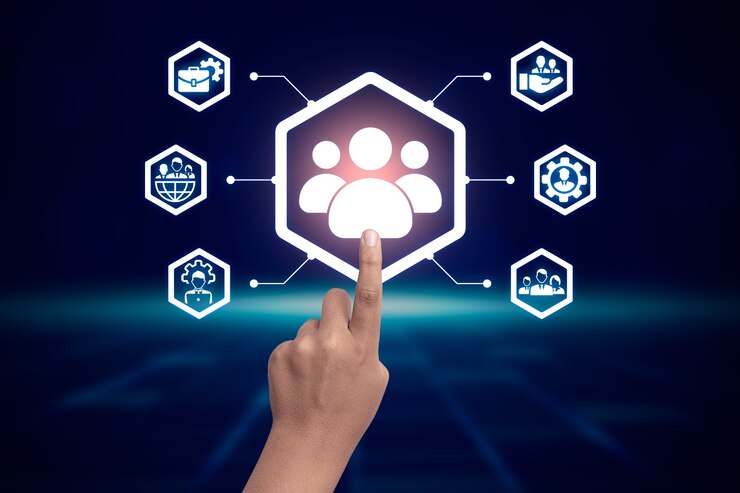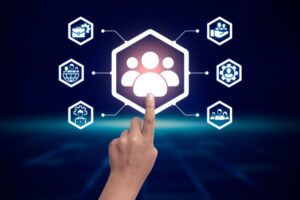Cultivating a Positive Company Culture: A Guide for HR Professionals
Introduction:
Creating a positive company culture isn’t just about perks and benefits; it’s about fostering an environment where employees feel valued, motivated, and empowered. In this guide tailored for HR professionals, we’ll delve into the essential strategies and practices to cultivate a workplace culture that drives engagement, productivity, and organizational success. From fostering inclusivity to promoting work-life balance, we’ll explore practical tips and insights to help you transform your workplace into a thriving community.
The Importance of Company Culture
A vibrant company culture is the cornerstone of organizational success. It influences employee morale, productivity, retention, and ultimately, the bottom line. By nurturing a positive culture, HR professionals can create an environment where employees are inspired to contribute their best work, collaborate effectively, and feel a sense of belonging.
Understanding the Elements of a Positive Culture
Defining Core Values
Core values serve as the guiding principles that shape a company’s culture. By clearly defining and communicating these values, HR professionals can align employees’ actions and behaviors with the organization’s mission and vision.
Promoting Open Communication
Open communication fosters transparency, trust, and collaboration within an organization. Encouraging dialogue at all levels, soliciting feedback, and actively listening to employee concerns are essential for creating a culture where everyone feels heard and valued.
Embracing Diversity and Inclusion
Diversity and inclusion are not only moral imperatives but also key drivers of innovation and creativity. HR professionals play a crucial role in promoting diversity initiatives, creating inclusive policies, and fostering a culture where differences are celebrated and respected.
Nurturing Employee Well-being
Supporting employee well-being goes beyond offering competitive benefits; it encompasses promoting work-life balance, prioritizing mental health, and providing resources for personal and professional development. HR professionals can champion initiatives such as wellness programs, flexible schedules, and mentorship opportunities to enhance employee satisfaction and engagement.
Recognizing and Rewarding Success
Acknowledging and rewarding employees’ contributions reinforces positive behaviors and motivates continued excellence. From employee recognition programs to performance-based incentives, HR professionals can design reward systems that celebrate achievements and foster a culture of appreciation.
Encouraging Professional Growth
Investing in employee development not only enhances individual skills but also strengthens organizational capabilities. HR professionals can facilitate learning opportunities, career advancement paths, and skill-building initiatives to empower employees to reach their full potential and drive company growth.
Fostering Team Collaboration
Collaboration is essential for driving innovation, problem-solving, and achieving common goals. HR professionals can facilitate team-building activities, cross-functional projects, and knowledge-sharing platforms to cultivate a collaborative culture where teamwork thrives.
Ensuring Leadership Alignment
Leadership plays a pivotal role in shaping company culture. HR professionals must work closely with organizational leaders to ensure alignment between stated values and actual practices, modeling desired behaviors, and holding leaders accountable for upholding the company’s culture.
Building Trust and Accountability
Trust is the foundation of a positive company culture. HR professionals can foster trust by promoting fairness, consistency, and integrity in all organizational processes, fostering a culture of accountability where employees take ownership of their work and actions.
Continuous Evaluation and Improvement
Creating a positive company culture is an ongoing process that requires regular assessment and refinement. HR professionals should gather feedback from employees, measure cultural metrics, and adapt strategies based on changing needs and dynamics.

FAQs
How can HR professionals promote diversity and inclusion in the workplace?
HR professionals can promote diversity and inclusion by implementing inclusive hiring practices, providing diversity training, creating affinity groups, and fostering a culture of respect and belonging.
What are some effective ways to recognize employee achievements?
Effective ways to recognize employee achievements include verbal praise, awards and certificates, public acknowledgment, bonuses or incentives, and opportunities for advancement or special projects.
How can HR professionals address employee burnout?
HR professionals can address employee burnout by promoting work-life balance, offering mental health resources and support, encouraging time off, and fostering a culture that values well-being.
What role does leadership play in shaping company culture?
Leadership plays a critical role in shaping company culture by setting the tone, modeling desired behaviors, communicating values, and aligning organizational practices with cultural goals.
How can HR professionals foster a culture of continuous learning and development?
HR professionals can foster a culture of continuous learning and development by providing access to training and development programs, offering mentorship opportunities, encouraging knowledge-sharing, and recognizing employees’ efforts to grow and improve.
What strategies can HR professionals use to improve employee engagement?
HR professionals can improve employee engagement by soliciting feedback, fostering open communication, recognizing achievements, providing opportunities for growth, promoting teamwork, and creating a positive work environment.
Conclusion
Cultivating a positive company culture is a multifaceted endeavor that requires commitment, creativity, and collaboration. By embracing the principles outlined in this guide, HR professionals can play a pivotal role in shaping a workplace where employees thrive, businesses succeed, and culture becomes a competitive advantage.



















